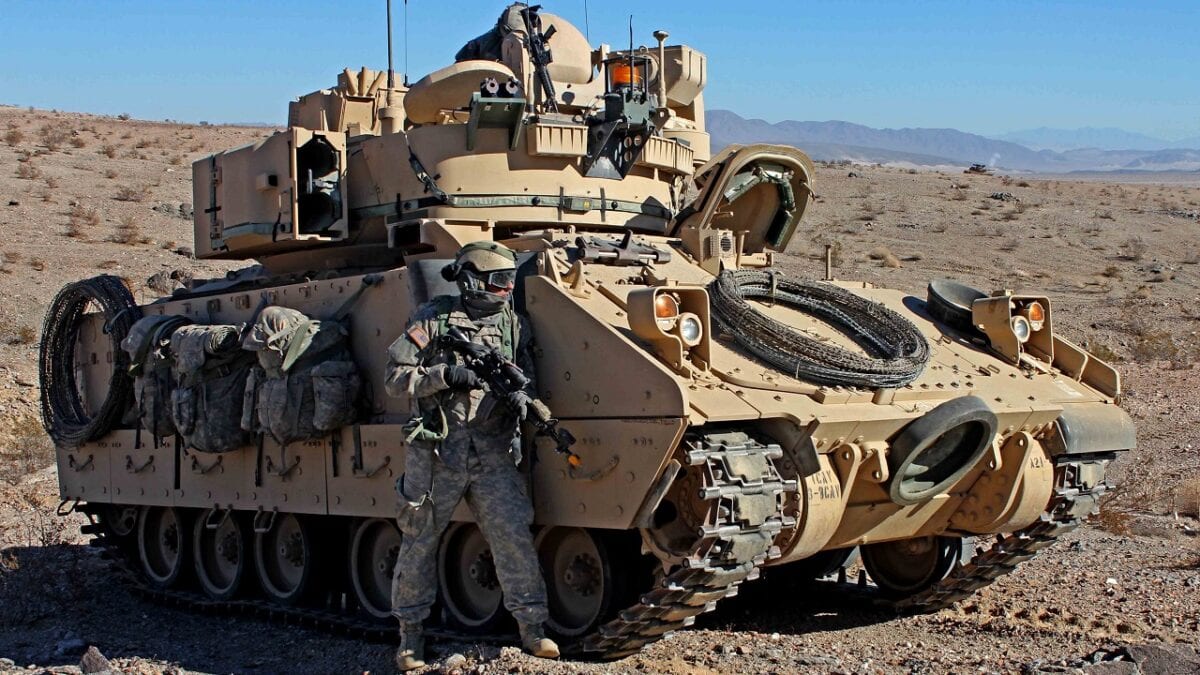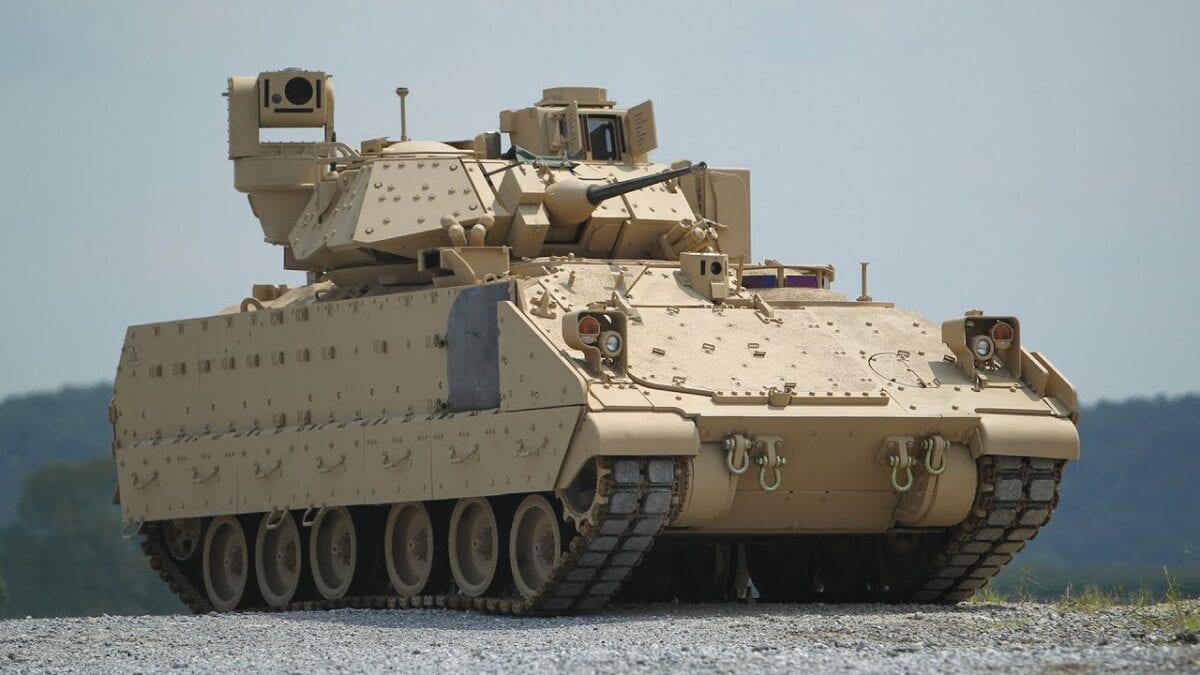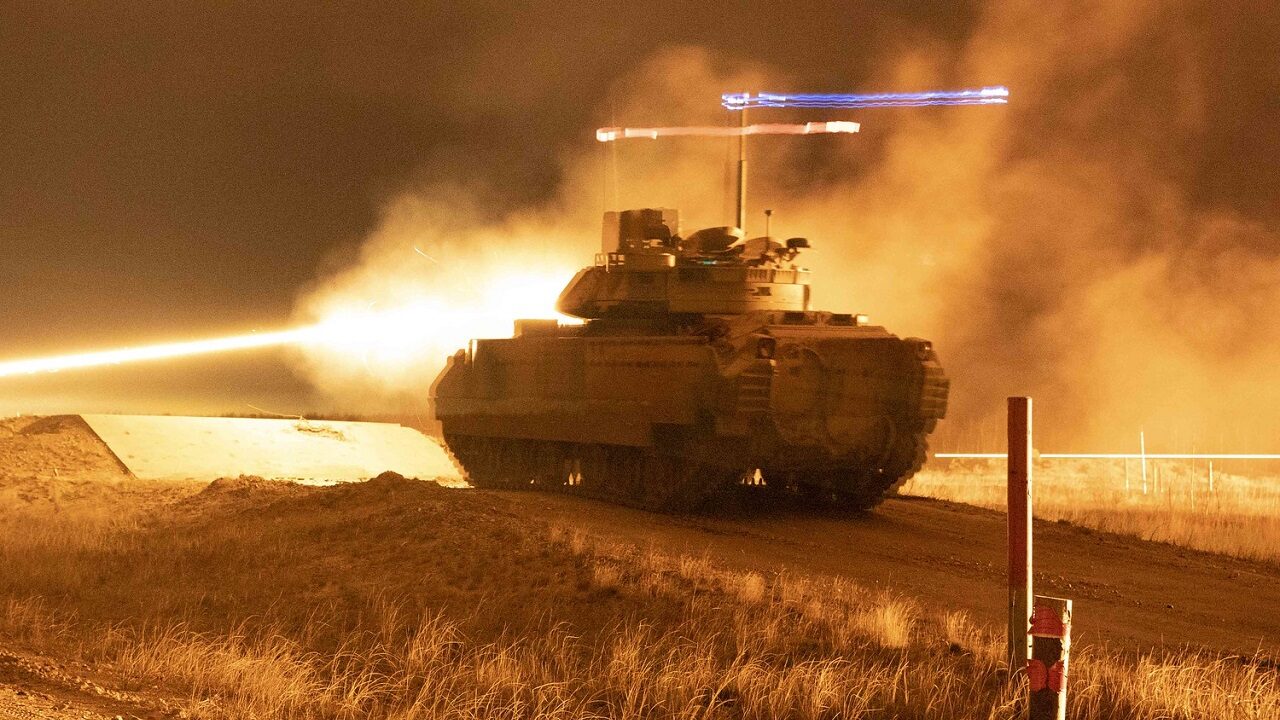The arrival of Bradley Fighting Vehicles in Ukraine is multi-faceted as it clearly could help Ukrainians implement impactful applications of Combined Arms Maneuver in response to mechanized Russian formations.
Yet, the arrival is likely challenged, given the simple fact that Ukrainian forces may not be getting enough of them.
Enter the Bradley Fighting Vehicle
Considering this dual scenario, there are both advantages and limitations presented by the arriving Bradleys. Clearly, an ability to forward carry infantry under armor in support of Ukrainian counterattacks introduces a previously unprecedented ability to support advancing forces. Bradley-enabled Ukrainian forces repelling or advancing against a Russian armored invasion would operate with an ability to dismount infantry or rapidly deliver a squad of fighters directly into high-intensity combat.
There are several lesser-recognized tactical advantages introduced by the arrival of Bradleys in the realm of sensing and anti-tank weaponry. The Bradley’s main Mk 44 gun brings firepower against Russian troops and vehicles, yet its thermal sensors may offer an even larger advantage.
It may not be clear which variant of the Bradleys the Ukrainians are getting, however, if export variants have some application similar to the U.S. Bradley’s Commander’s Independent Thermal Viewer, then Ukrainians will likely have a significant targeting and sensing advantage.
Ukrainian Bradleys with advanced thermal sights could detect heat signatures emanating from Russian combat vehicles at tactically significant ranges and potentially bring a measure of previously unavailable precision targeting. Thermal sensors can also enable targeting even in challenging weather conditions where fog, snow, or rain could impair EO/IR targeting visibility.
U.S. Bradleys also have TOW anti-tank missiles as well as crew-served .50-cal machine guns to expand Ukrainian lethality. Should the Ukrainian Bradleys be armed with TOW missiles, that would add additional power to their effective use of anti-armor weapons against Russian mechanized units.
As part of this equation, a ring-mount-mounted .50-cal could add critical suppressive fire for dismounting infantry to maneuver amid enemy fire.
Nonetheless, while all of these advantages are tactically very significant and likely to greatly impact the Ukrainian effort, there simply may not be enough arriving Bradleys to enable the Ukrainians to sufficiently “mass” for counterattack. Ukrainian forces armed with Bradleys will likely be well equipped to penetrate a Russian perimeter or prevail in limited or more narrowly configured engagements, yet the ability to truly reclaim and “hold” territory would depend on the ability to mass with larger formations across a wider area of maneuvers. Therefore, the only problem with the arriving Bradleys may be that there simply may not be enough.

U.S. Army soldier from the 3rd Armored Brigade Combat Team, 1st Infantry Division pulls security next to a M2 Bradley Infantry Fighting Vehicle during Decisive Action rotation 13-03, Jan. 19, 2013, at the National Training Center in Fort Irwin, Calif. Decisive Action rotations are geared toward an adaptive enemy in a complex environment. (U.S. Army photo by Sgt. Eric M. Garland II/ Released)

M2 Bradley
Larger numbers of Bradleys may not arrive soon enough for Ukrainian forces to truly optimize their gains and advance upon Russian forces. This will require Ukrainians to employ and rely upon their proven ability to use anti-armor weapons to ambush, stop or fully destroy incoming Russian armored vehicles.
MORE: PAK DA – Is Russia New Stealth Bomer a Joke?
MORE: Was the F-14 Tomcat Retired Too Early?
MORE: Nimitz-Class – The Best Aircraft Carrier Ever?
Kris Osborn is the Military Affairs Editor of 19 FortyFive and President of Warrior Maven – Center for Military Modernization. Osborn previously served at the Pentagon as a Highly Qualified Expert with the Office of the Assistant Secretary of the Army—Acquisition, Logistics & Technology. Osborn has also worked as an anchor and on-air military specialist at national TV networks. He has appeared as a guest military expert on Fox News, MSNBC, The Military Channel, and The History Channel. He also has a Masters Degree in Comparative Literature from Columbia University.

